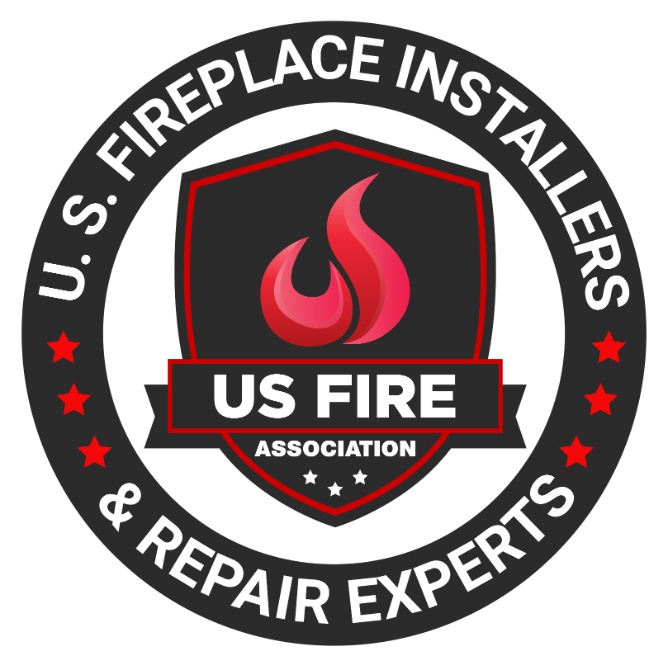Table of Contents
Are you considering installing a fireplace in your home but are concerned about the cost? Let’s talk about how to install a fireplace on a budget!
In this comprehensive guide, we will explore the various types of fireplaces available, the costs associated with installation, and tips for creating a budget-friendly fireplace.
From choosing the right fireplace type to maintaining it effectively, we have got you covered.
Whether you opt for a wood-burning, gas, or electric fireplace, we will provide you with the information you need to create a cozy and cost-effective heating solution for your home.
Why Install a Fireplace?
Installing a fireplace in your home brings numerous benefits beyond just providing heat.
It adds value to your property, enhances the aesthetics of your living space, and creates a cozy and warm ambiance that promotes comfortable living.
Fireplaces significantly impact overall property value, serving as a desirable feature that attracts potential buyers and increases resale prices.
From a design perspective, a fireplace serves as a focal point, adding character and charm to any room.
In terms of environmental benefits, modern fireplace options utilize eco-friendly heating sources, such as electric or gas inserts.
This promotes sustainability and reduces carbon emissions.
The crackling sound of a fire and the gentle warmth it emits also create a welcoming atmosphere for gatherings and relaxation.
Types of Fireplaces
Fireplaces come in various types, each offering unique design elements and functionalities.
From traditional wood-burning fireplaces to modern gas and electric options, there is a fireplace type suitable for every space, whether it’s your living room, bedroom, or basement.
- Wood-burning fireplaces, with their rustic charm and crackling sounds, are beloved for their traditional aesthetics and natural ambiance.
- Gas fireplaces provide convenience and efficiency, allowing for easy control of flames and heat output.
- Electric fireplaces are popular for their versatility and ease of installation, making them ideal for apartments or homes without chimneys.
Each type offers different heating sources, making them stylish design choices and practical additions to enhance the overall appeal and warmth of any indoor setting.
Wood-Burning Fireplaces
Wood-burning fireplaces are a classic choice for homeowners seeking a traditional and authentic heating source.
They provide a cozy ambiance with the crackling of burning wood and offer timeless aesthetic appeal, but they require proper ventilation and maintenance.
Proper maintenance of wood-burning fireplaces is crucial to ensure safety and efficiency.
Regular chimney cleaning is essential to prevent the buildup of creosote, a highly flammable substance.
It’s important to inspect the fireplace regularly for any signs of wear and tear.
While these fireplaces exude rustic charm, they can be less efficient in heating large spaces compared to other heating options.
Their ability to create a warm and inviting atmosphere makes them a popular choice for many homeowners looking to add a touch of tradition to their living spaces.
Gas Fireplaces
Gas fireplaces are popular for their efficient heating capabilities and easy installation.
They offer a clean and modern design that enhances the overall look of your property while providing a cozy ambiance and eco-friendly heating solution.
Gas fireplaces require low maintenance compared to traditional wood-burning fireplaces.
With no need for cleaning up ash or chopping wood, they are a convenient option for busy homeowners.
Gas fireplaces are highly versatile in terms of design, offering a range of styles from contemporary to traditional.
This allows you to find the perfect fit for your interior aesthetics.
These fireplaces can also increase the value of your property, making them a worthwhile investment for both comfort and home resale.
Electric Fireplaces
Electric fireplaces offer a convenient and cost-effective heating solution that requires minimal installation effort.
They are energy-efficient, low-maintenance options that can add a warm and cozy ambiance to your bedroom or basement without the need for venting or extensive renovations.
These fireplaces are not only cost-effective but also easy to install, making them a practical choice for those looking to enhance the atmosphere of their living spaces.
Their energy efficiency ensures that you can enjoy warmth without worrying about excessive energy consumption.
Electric fireplaces come in various sizes and styles, making it easy to find one that fits perfectly in your chosen room setting, whether it’s a small bedroom or a large basement area.
The low-maintenance features of electric fireplaces further contribute to their appeal, allowing you to enjoy the cozy glow without the hassle of cleaning up ash or soot.
How Much Does It Cost to Install a Fireplace?
The cost of installing a fireplace can vary depending on factors such as the type of fireplace, materials used, labor costs, and the overall scope of the project.
It’s important to consider your budget, long-term savings, and return on investment when planning for a fireplace installation.
Materials are a significant cost component when installing a fireplace.
Stone, brick, or wood for the mantel and surround, as well as the actual firebox and chimney materials, can impact the total expense.
Labor costs vary based on the complexity of the installation and the region’s average rates.
Tools required, such as a masonry saw, trowels, and a level, add to the overall cost.
To save money, consider DIY for simpler installations and shop around for competitive labor rates.
Proper maintenance, like regular chimney cleaning, can extend the fireplace’s lifespan and save on costly repairs in the long run.
Cost of Materials
The cost of materials for a fireplace installation can vary based on the type of fireplace, design preferences, and the quality of materials chosen.
It’s essential to budget for durable materials that fit your renovation project and come with appropriate warranties.
When considering materials for fireplace installation, one common choice is natural stone, offering a classic and elegant look that enhances the overall aesthetic of your space.
While natural stone may come with a higher price tag, its durability and timeless appeal make it a popular option.
On the other hand, manufactured stone veneer provides a more affordable alternative that mimics the look of natural stone without the same cost.
Metal fireplaces offer a modern touch and can be a cost-effective choice for those seeking a sleek and contemporary design for their fireplace.
Labor Costs
Labor costs for fireplace installation encompass the expenses associated with hiring contractors, obtaining permits, complying with building codes, and ensuring safety precautions are followed during the installation process.
It’s crucial to factor in labor costs when planning your fireplace project.
Understanding the breakdown of labor costs can help homeowners make informed decisions when evaluating estimates from contractors.
Reliable contractors play a key role in managing these costs effectively by providing transparent pricing and quality workmanship.
When it comes to permits, navigating the bureaucratic process can be daunting, but it is necessary to avoid legal complications.
Prioritizing safety measures throughout the installation timeline is non-negotiable to prevent accidents and ensure a successful project completion.
By selecting reputable professionals, adhering to regulations, and fostering a culture of safety, homeowners can enjoy a beautiful fireplace with peace of mind.
How to Install a Fireplace on a Budget?
Installing a fireplace on a budget requires strategic planning and consideration of cost-effective options.
By exploring DIY installation methods, shopping for deals on materials, and ensuring safety precautions are in place, you can achieve an efficient and affordable fireplace upgrade for your home.
- Begin by determining the type of fireplace that suits your needs – whether it’s a wood-burning, gas, or electric option.
- Research the local regulations regarding fireplace installation and obtain the necessary permits before starting the project.
- When sourcing materials, consider visiting salvage yards or online marketplaces for budget-friendly deals.
- Prioritize safety by installing carbon monoxide detectors, fire-resistant materials, and ensuring proper ventilation.
- Maximize heat output by adding a blower or fan to improve circulation and enhance the aesthetics by incorporating design elements like a mantle or surround.
Choose a Cost-Effective Fireplace Type
Opting for a cost-effective fireplace type can significantly impact your budget during installation and long-term maintenance.
Consider options that balance affordability with aesthetics, heat output, and efficiency to maximize your savings over time.
Different types of fireplaces vary in installation costs and materials, with options ranging from traditional wood-burning fireplaces to more modern gas or electric models.
Wood-burning fireplaces may offer a classic feel, but they require regular maintenance and can be less efficient in terms of heat output.
On the other hand, gas and electric fireplaces are usually easier to install and maintain, providing consistent heat and energy efficiency.
By understanding the trade-offs and benefits of each type, you can make a smart choice that fits your budget and renovation goals.
DIY Installation
Embarking on a DIY fireplace installation can offer significant cost savings while providing a hands-on approach to your home improvement project.
By following a step-by-step guide, gathering the necessary tools, and ensuring compliance with safety regulations, you can achieve a successful DIY fireplace installation.
One of the key benefits of opting for a DIY fireplace project is the sense of accomplishment and pride that comes with creating a cozy focal point in your home on your own.
Starting with ensuring you have the right tools such as a tape measure, level, stud finder, and safety gear, you can proceed to map out the installation area and secure any required permits.
Safety should be a top priority, including checking for flammable materials and ensuring proper ventilation.
With the right preparation and attention to detail, homeowners can confidently navigate the construction process, from framing to finishing, and enjoy the warmth and ambiance of their DIY fireplace.
Shop Around for Deals
Saving money on fireplace installation can be achieved by shopping around for deals on materials, tools, and construction services.
By comparing prices from different suppliers and exploring cost-saving opportunities, you can stay within your budget while optimizing the value of your fireplace project.
One effective way to reduce costs is to look for seasonal sales or clearance events at hardware stores or online retailers.
Joining loyalty programs or signing up for newsletters may provide access to exclusive discounts.
When negotiating with contractors or service providers, be sure to highlight any cheaper quotes you’ve received elsewhere as leverage.
Don’t forget to inquire about package deals or bundled services that could further lower expenses.
By being proactive and strategic in your approach, you can create a beautiful fireplace setup without breaking the bank.
Consider Second-Hand Fireplaces
Exploring second-hand fireplaces can be a budget-friendly option for homeowners looking to save on installation costs.
By considering pre-owned fireplace units in good condition, you can achieve significant savings while adding value to your property through an affordable renovation project.
When selecting a quality pre-owned fireplace, it’s essential to inspect it thoroughly to ensure it functions properly and meets safety standards.
Look for signs of wear and tear, check the flue and chimney for any blockages, and test the controls.
Integrating a second-hand fireplace seamlessly into your home involves choosing a style that complements your existing decor and arranging for professional installation to guarantee proper operation.
By following these guidelines, you can successfully upgrade your fireplace in a cost-effective manner and enjoy the warmth and ambiance of a beautiful, economical investment.
Tips for Maintaining a Budget Fireplace
Maintaining a budget fireplace involves simple yet effective strategies to prolong its lifespan and optimize efficiency.
From regular cleaning and using seasoned firewood to ensuring proper insulation and managing the damper, these tips can help you achieve an energy-efficient and cost-effective fireplace setup.
- Regular cleaning is key to preventing creosote buildup, which can pose a fire hazard. Opt for a chimney sweep at least once a year to keep the flue clear.
- When it comes to wood selection, choose hardwoods like oak or maple for longer, cleaner burns. Proper insulation around the fireplace can prevent heat loss and improve warmth retention.
- Utilize the damper to control airflow and maximize efficiency, closing it when the fireplace is not in use to prevent drafts. By following these practices, you can enjoy a cozy and economical fireplace experience in your home.
Regular Cleaning and Maintenance
Regular cleaning and maintenance are essential for preserving the functionality and safety of your fireplace.
By keeping the fireplace clean, using quality firewood, and maintaining proper insulation, you can ensure its efficiency, longevity, and overall performance.
Routinely inspecting the fireplace for any signs of wear and tear can help prevent potential hazards.
Ensuring that the chimney is clear of blockages and debris is crucial for proper ventilation and preventing dangerous buildup of carbon monoxide.
It’s also advisable to have a professional chimney sweep done annually to remove creosote buildup.
Implementing these practices enhances the aesthetic appeal of your fireplace and contributes to a safer and more enjoyable experience for you and your household.
Use Seasoned Firewood
Using seasoned firewood is crucial for maintaining a clean and efficient fireplace.
Seasoned wood burns more effectively, produces less smoke and creosote buildup, and contributes to a cozy warmth that enhances the ambiance of your living space.
The dryness of seasoned firewood allows it to ignite faster and produce a consistent, steady heat, making your fireplace more energy-efficient.
This efficiency reduces the amount of wood needed for fuel and minimizes the maintenance required for your fireplace.
With seasoned wood, you can enjoy a longer-lasting fire with fewer interruptions for tending to the flames or cleaning out residual ash.
All these benefits culminate in a charming atmosphere that keeps your home warm and inviting during the colder months.
Properly Insulate the Fireplace
Properly insulating the fireplace is essential for optimizing its efficiency, maintaining energy-efficient heating, and ensuring safety features are enhanced.
Effective insulation promotes consistent heat distribution and prevents energy wastage, contributing to a cozy and secure fireplace setup.
Proper insulation helps regulate the temperature within the fireplace, allowing for better control over heat output.
This is crucial for creating a comfortable environment and ensuring that the fireplace operates efficiently without generating excess heat.
By reducing heat loss through insulation, homeowners can significantly lower their energy bills while enjoying a warm and inviting atmosphere in their living spaces.
Close the Damper When Not in Use
Closing the damper when the fireplace is not in use is a simple yet effective way to enhance safety, improve efficiency, and maintain energy-efficient heating.
It helps regulate heat distribution, prevent drafts, and preserve the aesthetics of your fireplace setup.
In addition to these benefits, closing the damper plays a crucial role in maximizing the functionality and longevity of your fireplace.
By sealing off the chimney when not in use, you can prevent animals or debris from entering, reduce the risk of unwanted odors or smoke entering your home, and avoid potential fire hazards.
This practice ensures a cozy and safe environment and contributes to cost savings by preventing heat loss and optimizing the overall performance of your fireplace system.
Final Thoughts
Installing a fireplace can be a rewarding home improvement project that adds value to your property, enhances comfort, and provides efficient heating solutions.
By considering factors such as aesthetics, efficiency, and long-term savings, you can create a cozy and stylish living space that offers both warmth and visual appeal.
Fireplaces not only increase the resale value of a home but also serve as a focal point that enhances the overall ambiance of a room.
The cozy atmosphere created by a fireplace is unmatched, making it a popular choice for homeowners seeking both warmth and style.
Maintaining a fireplace properly can lead to significant energy savings over time, making it a sustainable investment for the long run.
By integrating a well-maintained fireplace into your home, you can enjoy the benefits of increased property value, improved comfort, and enhanced energy efficiency.
Contact Dreifuss Fireplaces today for all of your fireplace installation needs!
Frequently Asked Questions
1. Why should I install a fireplace in my home?
Installing a fireplace adds value to your property, enhances the aesthetics of your living space, and creates a warm ambiance for gatherings and relaxation.
2. What are the different types of fireplaces available?
The main types of fireplaces are wood-burning, gas, and electric fireplaces, each offering unique designs and functionalities suitable for different spaces.
3. How much does it generally cost to install a fireplace?
The cost of installing a fireplace varies based on the type, materials used, and labor costs. It’s important to budget properly for your specific project.
4. What are some budget-friendly tips for installing a fireplace?
Consider DIY installations, shop around for materials, and explore second-hand options to save money while maintaining quality.
5. How can I maintain my fireplace on a budget?
Regular cleaning, using seasoned firewood, and proper insulation are key strategies for maintaining a budget fireplace efficiently.
6. What maintenance is required for wood-burning fireplaces?
Wood-burning fireplaces require regular chimney cleaning, inspections for wear and tear, and proper ventilation to ensure safety and efficiency.
7. Are gas fireplaces more efficient than wood-burning ones?
Yes, gas fireplaces are generally more efficient as they require less maintenance, provide convenient heat control, and eliminate the need for ash cleanup.
8. What should I consider when choosing materials for my fireplace?
Consider durability, aesthetics, and whether the materials come with warranties. Options include natural stone, brick, and manufactured stone veneer.
9. How does proper insulation affect fireplace efficiency?
Proper insulation prevents heat loss, regulates temperature, and enhances safety, contributing to a more efficient and cost-effective fireplace system.
10. What are the advantages of using seasoned firewood?
Seasoned firewood burns more effectively, produces less smoke and creosote buildup, and provides consistent heat, improving the efficiency of your fireplace.
Latest Articles

What Is An NG (Natural Gas) Indicator And Why You Need It For Your Fireplace
Table of Contents1 Understanding Natural Gas Fireplaces2 What is an NG Indicator?3 Importance of NG Indicators for Safety4 Types of NG Indicators5 Installation and Maintenance of NG Indicators6 Signs of a Faulty NG Indicator7 Frequently Asked Questions Natural gas fireplaces are a favored option among numerous homeowners due to their convenience and effectiveness. But, what is an NG (Natural Gas) indicator and why you need it for your fireplace? It is imperative to comprehend how they function and the significance of having an NG (Natural Gas) indicator for safety purposes. This article delves into the definition and significance of NG indicators. We will discuss the potential hazards associated with the absence of one and the various types of indicators accessible. Also, we will discuss installation and maintenance recommendations, and methods to recognize and rectify issues with malfunctioning indicators. Stay well-informed and ensure the safety of your home by referring to this exhaustive guide. Understanding Natural Gas Fireplaces Natural gas fireplaces serve as an efficient and convenient heating option for numerous households. They utilize natural gas as a fuel source to deliver consistent warmth and ambiance. How They Work and Why They Need NG Indicators The operation of natural gas fireplaces involves igniting natural gas to generate heat. This process requires diligent monitoring to ensure both safety and efficiency, a task facilitated by the use of NG indicators. NG indicators play a critical role in detecting potential gas leaks. They enable residents to promptly address and mitigate any associated hazards. Through continuous monitoring of gas levels and providing timely warnings and alerts, NG indicators uphold a secure indoor environment. It is imperative to ensure that these indicators function properly to facilitate the effective operation of natural gas fireplaces. This helps mitigate the inherent risks linked to gas leaks. What is an NG Indicator? An NG indicator is a specialized device equipped with advanced sensors and technology. It is specifically designed to detect natural gas leaks and monitor gas pressure in appliances, such as fireplaces. Definition and Purpose The NG indicator functions as a detector that monitors gas appliances for potential leaks. It provides essential functionality to ensure safety in households utilizing natural gas. These detectors play a crucial role in protecting residences by notifying occupants of dangerous gas leaks long before they escalate into perilous situations. Through continuous monitoring of gas levels in the vicinity, NG indicators offer an additional layer of protection. This is particularly important in properties that rely on gas-operated fireplaces or stoves. These devices not only help avert potential disasters but also enhance the overall peace of mind of homeowners. They assure them that their living spaces are equipped with reliable safety features. Importance of NG Indicators for Safety Natural gas indicators are essential for maintaining safety in households equipped with natural gas appliances. These devices serve as a proactive measure to promptly detect gas leaks. This offers homeowners a sense of security and assurance. Potential Dangers of Not Having an NG Indicator The absence of an NG indicator in residences equipped with natural gas appliances can pose significant hazards. This includes the risk of undetected gas leaks , carbon monoxide poisoning , and pilot outages that may lead to dangerous situations. These potential risks can profoundly impact indoor air quality. They directly influence the health and safety of individuals residing in the household. Undetected gas leaks can go unnoticed, gradually permeating the air and creating a potentially explosive environment. Insufficient ventilation from undetected exposure to carbon monoxide can lead to serious health complications. These range from mild symptoms such as dizziness to fatal poisoning. Without proper monitoring from an NG indicator, families are left susceptible to these concealed threats. This underscores the critical importance of implementing proactive measures to mitigate such risks. Types of NG Indicators Indicators for Natural Gas (NG) are available in diverse types. Each presents distinct detection capabilities tailored to specific requirements, encompassing both manual and automated alternatives. Manual vs. Automatic Indicators Manual NG indicators require user intervention for monitoring gas levels and identifying leaks. On the other hand, automatic indicators employ sophisticated technology to deliver continuous, real-time monitoring. This heightened efficiency and oversight enhance safety protocols. Conventional manual indicators rely on individuals to physically inspect and evaluate gas levels periodically. This renders them more susceptible to human errors. Conversely, automatic indicators feature sensors capable of promptly detecting even the most minute fluctuations in gas levels. This establishes a more dependable and precise monitoring mechanism. Automatic indicators can activate alerts and shut-off systems upon detecting a leak. This ensures immediate action to avert potential hazards. This advanced technology enhances safety protocols and instills a sense of command and assurance among users. Installation and Maintenance of NG Indicators The reliable and accurate performance of NG indicators necessitates proper installation and consistent maintenance. This often entails professional installation and adherence to recommended service guidelines. Proper Installation and Regular Maintenance Tips The proper installation of NG indicators involves adhering to the specifications in the user manual. Maintenance protocols entail strict adherence to a predetermined maintenance schedule to ensure sustained operational efficiency. During the installation phase, it is imperative to verify that the NG indicators are securely affixed in the designated location as stipulated by the manufacturer. Crucial steps include confirming power source compatibility and ensuring proper grounding of the device to optimize performance. Calibration of the indicator must be executed meticulously to ensure precise readings. Regarding maintenance, essential practices include regular inspection for signs of wear, thorough cleaning of the indicator components, and routine functionality tests. By allocating time to a consistent maintenance regimen, the NG indicator can operate with optimal efficiency over an extended duration. Signs of a Faulty NG Indicator Recognizing indicators of a malfunctioning NG indicator is essential for upholding safety and performance standards. Inaccuracies and detection issues can undermine the efficacy of these devices. Identifying and Addressing Issues The process of identifying and addressing issues related to NG (natural gas) indicators requires a systematic troubleshooting approach. This ensures their optimal performance

What You Need To Know About Gas Log Set Safety And Installation Considerations
Table of Contents1 Understanding Gas Log Sets2 Safety Considerations for Gas Log Sets3 Installation Guidelines for Gas Log Sets4 Maintaining and Troubleshooting Gas Log Sets5 Frequently Asked Questions Gas log sets are a favored option among homeowners seeking to enjoy the comfort and atmosphere of a conventional fireplace without the inconvenience of wood. This article tells you what you need to know about gas log set safety and installation considerations. Before incorporating one into your residence, it is imperative to understand the safety considerations associated with their use. This discussion delves into the potential hazards linked with gas log sets. It presents crucial precautions to uphold the safety of your home. Also, it outlines proper installation procedures and offers insight into common errors to avoid. Finally, it provides advice on maintenance and troubleshooting. Gain comprehensive knowledge on gas log set safety and installation considerations. Understanding Gas Log Sets Comprehending gas log sets is essential for individuals seeking to elevate their fireplace experience, and for gas lag set safety and installation. These heating appliances can operate on either natural gas or propane. In addition, they are available in a range of styles, including vented, ventless, and vent-free options. They provide an array of benefits and customization opportunities through various fireplace accessories. What are Gas Log Sets? Gas log sets are meticulously crafted artificial logs. They are designed to imitate the appearance and functionality of authentic wood logs within fireplaces. These gas log sets typically consist of ceramic or refractory concrete logs that have been skillfully molded and painted. This allows them to replicate the natural grain and texture of real wood. The logs are arranged in various configurations within the fireplace. They establish a realistic and welcoming ambiance. In addition to the logs, gas log sets often include fireplace accessories such as glowing embers. Accessories also include decorative stones, and even pine cones to enhance the overall aesthetic appeal. Homeowners can select from an array of placement options. These include traditional wood stack, cascading driftwood, or a contemporary geometric arrangement. Homeowners can align their preferred style and design preferences. Safety Considerations for Gas Log Sets Safety considerations for gas log sets are of utmost importance to guarantee a secure and pleasant fireplace experience. It is essential to address potential hazards such as carbon monoxide exposure, gas leaks, and fire safety to maintain a safe environment for homeowners. Potential Hazards and Precautions Gas log sets come with potential hazards that must be taken seriously, including the risks of gas leaks, carbon monoxide poisoning, and fire incidents. It is imperative to establish and adhere to rigorous safety measures to ensure the well-being of individuals and properties involved in the use of gas log sets. Gas leaks represent a significant hazard when utilizing gas log sets. They can result in the accumulation of combustible gas within the premises, heightening the possibility of explosions or fires. Carbon monoxide, an insidious gas generated during incomplete combustion, poses a grave threat due to its colorless and odorless nature, making it undetectable without proper monitoring. To address these risks effectively, it is vital to install carbon monoxide detectors and gas leak sensors in the vicinity of the gas logs. Routine maintenance checks on the gas log system, including cleaning and inspection procedures, are critical to ensure safe operations and the prompt identification of potential issues. In case of a gas leak or suspected presence of carbon monoxide, immediate evacuation of the affected area is paramount, followed by prompt contact with emergency services. Recognizing the distinct odor of rotten eggs associated with natural gas can serve as an early warning sign, prompting swift actions to avert any potential accidents. Installation Guidelines for Gas Log Sets The installation of a gas log set necessitates meticulous planning and strict adherence to specific guidelines. This includes verifying a secure gas connection, ensuring proper gas lines are in place, and complying with local building codes. Often, the complexity of these requirements may require the expertise of a certified technician. Proper Installation Techniques The appropriate installation procedures for gas log sets involve the secure connection of gas lines, meticulous adherence to installation manuals, and strict compliance with local building codes. It is imperative to prioritize the guarantee of secure gas connections to avert leaks and potential safety hazards. During the installation of gas log sets, utilizing suitable sealants and fittings is essential to establish a tightly sealed connection. The correct installation of gas lines is critical for both the safety and operational efficacy of the gas log set. Reference to the installation manual is highly advisable for detailed, step-by-step guidance to prevent inaccuracies and ensure the successful establishment of the gas log set. Consistently adhering to building codes and regulations upholds safety standards. Seeking guidance and confirmation from a certified technician before and after installation can offer invaluable support and assurance throughout the process. Common Installation Mistakes to Avoid It is imperative to avoid common installation errors to ensure the secure and effective operation of gas log sets. This includes verifying proper gas connections and compliance with building codes. Improper gas connections can result in leaks and potential hazards, underscoring the importance of verifying the tightness and correct alignment of all fittings. Failure to adhere to building codes can lead to structural complications, penalties for non-compliance, or even safety concerns. To prevent these oversights, it is advised to consult the manufacturer’s installation guidelines and strictly adhere to local regulations. Engaging a certified technician for the installation of gas log sets guarantees that the procedure is carried out accurately and securely. This provides assurance that the system is functioning as intended. Maintaining and Troubleshooting Gas Log Sets Regular maintenance and troubleshooting of gas log sets are imperative to uphold their optimal performance and safety. This includes thorough examination of the pilot light, pilot assembly, and other gas appliances to preserve heating efficiency and promptly resolve any arising issues. Tips for Maintenance and Repair Ensuring the proper maintenance of your gas log set necessitates conducting

Key Considerations For Using Compressed Liquid Propane In Fireplace Installation
Table of Contents1 What is Compressed Liquid Propane?2 Benefits of Using Compressed Liquid Propane in Fireplaces3 Safety Precautions for Installing Compressed Liquid Propane Fireplaces4 Installation Process for Compressed Liquid Propane Fireplaces5 Maintenance and Care for Compressed Liquid Propane Fireplaces6 Alternative Fuel Options for Fireplaces7 Frequently Asked Questions If you are contemplating the use of compressed liquid propane in your fireplace installation, this discussion will delve into the advantages of adopting this alternative fuel option. These benefits include enhanced efficiency, cost savings, and important safety precautions to consider. Furthermore, a detailed step-by-step guide on the installation process will be provided, along with recommendations for maintenance and care. A comparison of various fuel options for fireplaces will also be conducted to assist you in making an informed decision. We encourage you to stay engaged to gain insights into optimizing your fireplace’s capabilities with compressed liquid propane. What is Compressed Liquid Propane? Compressed Liquid Propane is a versatile energy source contained in a high-pressure propane tank. It finds extensive utility in both residential and commercial settings, prominently including fireplaces. Recognized for its convenience and efficiency, Compressed Liquid Propane emerges as a favored option for heating residential spaces and facilitating culinary pursuits across various environments. Additionally, it serves as a viable fuel substitute in vehicular contexts, portable cooktops, and outdoor grilling scenarios due to its propensity for clean combustion. The attribute of portability, coupled with ease of storage, positions Compressed Liquid Propane as an optimal energy source for individuals residing off the conventional grid. It is also great for engaging in outdoor activities such as camping and recreational vehicle (RV) travel. Moreover, the high energy density inherent to Compressed Liquid Propane renders it a dependable choice for sustaining generators during instances of power disruptions. Benefits of Using Compressed Liquid Propane in Fireplaces Utilizing Compressed Liquid Propane for fireplace installation presents several benefits. These include enhanced fuel efficiency, convenience, cost-effectiveness, and a favorable environmental footprint. These attributes render it a recommended option for heating solutions, applicable to both on-grid and off-grid settings. Efficiency and Cost Savings The utilization of Compressed Liquid Propane in fireplaces offers significant advantages, notably in terms of high fuel efficiency and cost-effectiveness. These attributes are underscored by the exceptional BTU rating and overall heating efficiency of Compressed Liquid Propane. The elevated fuel efficiency exhibited by Compressed Liquid Propane fireplaces necessitates less fuel to generate the same level of heat compared to traditional wood-burning fireplaces or electric heating systems. Consequently, homeowners can realize cost savings on their heating expenditures over an extended period. Moreover, the clean-burning characteristics of propane minimize maintenance costs linked to soot and ash cleanup. This further enhances the cost-effectiveness of employing propane fireplaces. Safety Precautions for Installing Compressed Liquid Propane Fireplaces Ensuring safety is of utmost importance during the installation of Compressed Liquid Propane fireplaces. This requires strict adherence to safety regulations, meticulous attention to proper ventilation requirements, careful control of ignition sources, and the incorporation of carbon monoxide and gas leak detection systems. Important Safety Measures Essential safety protocols for the installation of Compressed Liquid Propane fireplaces encompass adherence to fire safety regulations. Engaging in professional assessments and employing sophisticated gas leak and carbon monoxide detection mechanisms is crucial. Professional evaluations play a critical role in identifying any prospective hazards or irregularities within the fireplace infrastructure. These assessments are vital in ensuring the operational integrity of all components and compliance with safety protocols. Routine inspections serve to forestall potential fire incidents, gas discharges, or carbon monoxide emissions that could pose significant threats to both the property and individuals in the vicinity. The utilization of advanced gas leak and carbon monoxide detection systems serves as an additional safeguard by promptly notifying occupants of any elevated levels of these hazardous gases. Installation Process for Compressed Liquid Propane Fireplaces The installation procedure for Compressed Liquid Propane fireplaces encompasses several critical steps. These include: Adhering to installation guidelines Correctly positioning the propane tank Ensuring precise gas line installation Optimizing heat output Monitoring pressure regulation Establishing the pilot light Step-by-Step Guide The installation process of Compressed Liquid Propane fireplaces involves a systematic approach. This begins with the construction of the firebox, followed by the installation of the gas control valve, setup of the ignition system, design of the flue, and verification of a suitable combustion air supply. The construction of the firebox assumes critical importance as it serves as the foundation of the fireplace structure. It securely holds the combustible materials in place. Subsequently, the gas control valve plays a key role in managing the propane flow, guaranteeing safe and efficient operation. The installation of the ignition system facilitates convenient and reliable fire initiation. Designing the flue is a necessary step to direct exhaust gases outside, thus preventing their accumulation indoors. Moreover, ensuring a proper combustion air supply is essential to sustain optimal burning conditions and enhance fuel consumption efficiency. Each component contributes significantly to the functionality and safety of the fireplace installation process. This underscores the importance of meticulous attention to detail and adherence to established protocols. Maintenance and Care for Compressed Liquid Propane Fireplaces Consistent maintenance and attention to Compressed Liquid Propane fireplaces are imperative to guarantee their optimal functionality. This includes adherence to prescribed maintenance protocols, regular chimney upkeep, prevention of soot accumulation, and scheduling of routine propane deliveries and professional inspections. Tips for Keeping Your Fireplace in Good Condition For the maintenance of your Compressed Liquid Propane fireplace, it is essential to conduct regular checks on ignition sources. Monitor flame appearance, clean the gas burner and pilot assembly, and verify the correct operation of the safety shut-off valve. The inspection of ignition sources requires a detailed examination of the electronic igniter. This helps identify any signs of damage or corrosion and ensures proper sparking upon activation. Monitoring flame appearance involves observing a consistent blue flame with minimal flickering, which signifies efficient combustion. Cleaning the gas burner and pilot assembly can be performed using a soft brush or compressed air to eliminate any dirt or debris that may


















































































